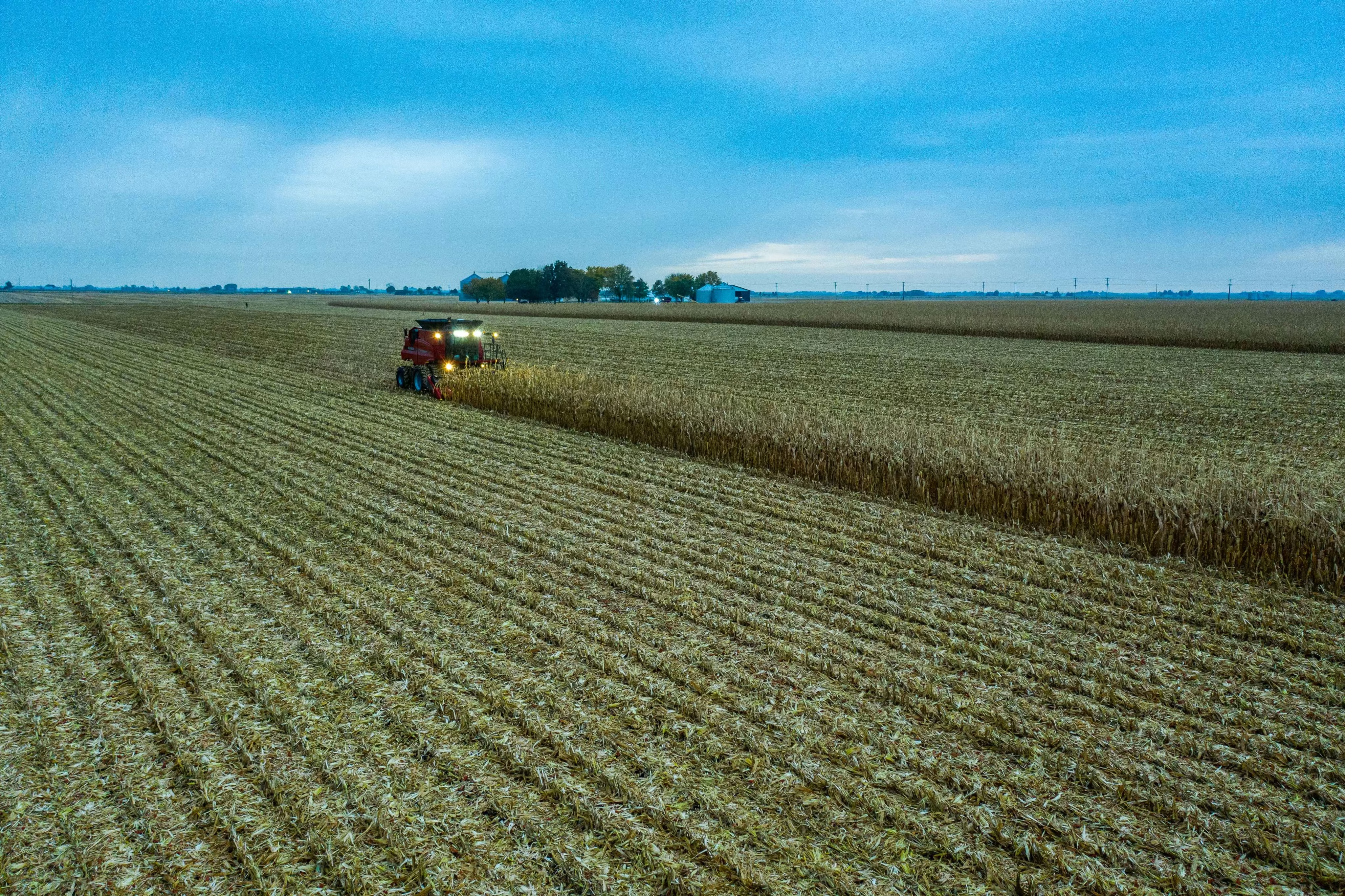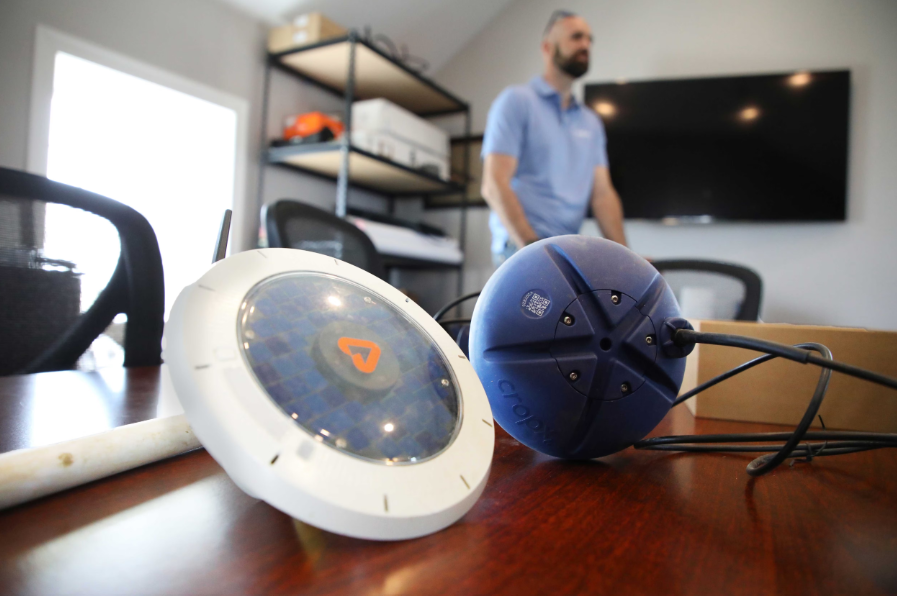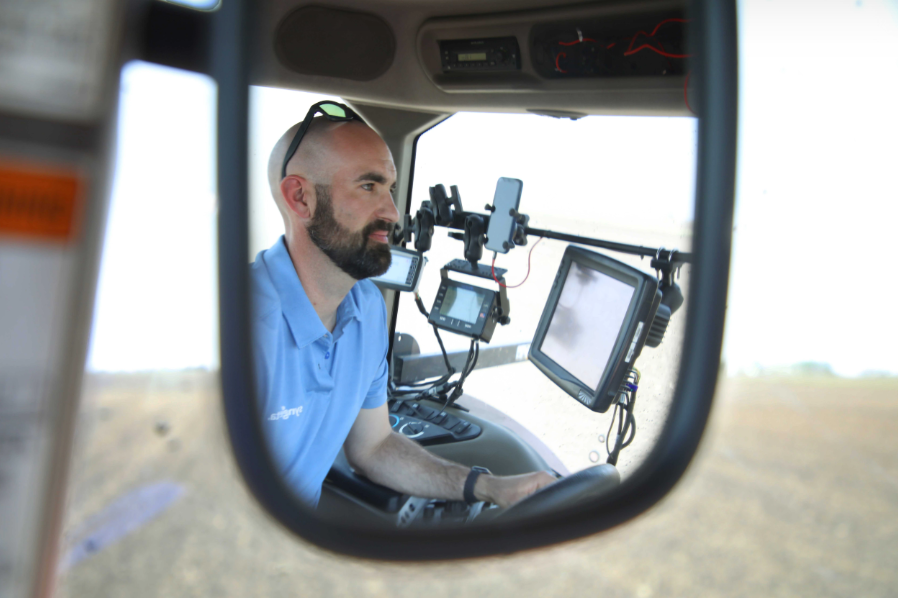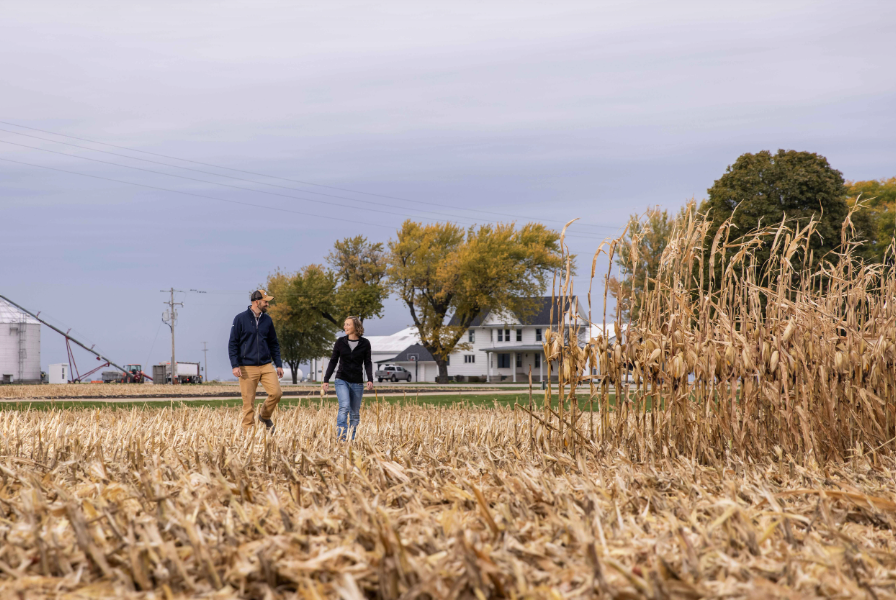Farm of the future provides fertile ground for digital innovation

On a small U.S. farm in central Illinois this growing season, the latest agricultural technologies and methods are being put to the test.
The 152-acre farm is similar in many ways to the other corn and soybean farms that stretch for miles in every direction in the heart of the U.S. corn belt. What makes this farm different is its focus on digital agriculture—including algorithms to help determine seed selection by soil type, sensors for disease detection and prediction, and drones for precise weed control.
Welcome to Syngenta Group’s Farm of the Future. This working farm adopts, applies and recommends innovative new technologies from Syngenta and other suppliers. “It is our digital agriculture testing ground,” says Bill McDonnell, manager of Farm of the Future and Syngenta’s digital solutions lead.
Established last year, Farm of the Future serves as a nexus linking Syngenta’s research and development team, which focuses on early-stage technologies, and Syngenta’s digital team, and the commercial operations of the growers that Syngenta serves.
The test farm enables Syngenta to provide growers with recommendations on products that have been tried and tested under real-world conditions. That way, farmers don’t have to invest their own time and resources on product screening and experimentation.
“Everything we do here is on commercial scale,” McDonnell says. “We want to determine, ‘Is this valuable to a grower? And does it scale up from 20 acres to 2,000 acres to 10,000 acres?’”
Data-driven insights
Farm of the Future is located within the boundaries of the corn and soybean farm that McDonnell’s family has operated for more than 100 years. The setting helps ensure that the emerging technologies being evaluated meet the day-to-day requirements of an actual farm.
Farm of the Future makes extensive use of aerial imagery, sensors, programmable equipment and other digital technologies. Syngenta uses the data generated by its field studies to develop products and to glean insights that are shared with customers through Syngenta’s Cropwise digital-farming platform.
Projects range in size from twenty to hundreds of acres, sometimes extending to farms elsewhere in the state. For example, a project called “Bin Buster” is evaluating nitrogen use and soil health across a total of 400 acres, comprised of Farm of the Future and four other Illinois farms.
In all its projects, Farm of the Future seeks to advance agricultural solutions with high potential for improving yield and sustainability. Equally important, however, is its goal of identifying technologies that may not perform as well—as standalone products or in combination with others—through what might be called a “fail fast” approach.
“We're here to find out which technologies provide value to farmers, but also which ones fail, determine that quickly and move on,” says McDonnell.
Nearly a dozen projects, from small trials to multi-year undertakings, are underway at Farm of the Future. They include:
- Disease modeling. Weather and disease information is typically generated in separate data streams. But in this trial a weather station—which records temperature, rainfall, humidity and more—is being used in conjunction with a disease-capture device that gathers data for disease modeling. The project is evaluating how those two technologies, when used together, can provide an integrated view. For example, evidence of disease spores under certain weather conditions might indicate a higher likelihood of disease spread, triggering an automated alert to the grower.
- Seed Selector algorithm. Farm of the Future last year evaluated the performance of two corn hybrids—one recommended by Syngenta’s proprietary Seed Selector algorithm based on soil type, the other chosen without the algorithm. The recommended hybrid excelled by approximately 25 bushels per acre. The project is now expanding to eight corn hybrids over 260 acres. Data on the performance of the hybrids will help refine Syngenta’s artificial intelligence-based tool, which is used on farms around the world.
- Fungicide application. A Phase One trial assessed fungicide application on a 20-acre corn crop using both a ground-based sprayer and a drone. The ground sprayer had a sizeable advantage in capacity (1,000 gallons for the ground sprayer compared to 2.7 gallons for the drone) and spray width (90 feet for the ground sprayer compared to 20 feet for the drone). Notably, however, there was not a yield difference between the two methods. That means the drone is well suited for targeted applications.
- Weed escape. This trial looked at the ability for drone imagery to identify the spread of weeds—known as weed escape—in and around a soybean field late in the season. A prescription was then created to apply herbicide, also by drone, precisely where needed. The process worked “extremely well,” McDonnell says. “We found out we were able to do all of those things efficiently.”
- Soil classification. A new trial will explore methods of soil classification using sensors attached to field equipment. The data collected will identify areas within the field where the soil type changes and be used to create variable rate prescriptions for seeding and fertilizer, based on changing soil types.
- Soybean population. Because of the varying quality of soybeans planted and other factors, growers have traditionally used more soybeans in a field than may be necessary for the best yield. That conventional approach is being tested in a trial this summer that will assess ideal soybean population, or seeds per acre, based on both soil type and planting date. The hypothesis: There will be variability in the optimum soybean population based on soil type and planting date. If that proves correct, it could lead to more efficient planting and related cost savings.
- Optimizing nitrogen use. Over-fertilizing is inefficient and potentially harmful to the environment. How do practices in the field affect the nitrogen rate being applied? Project Bin Buster seeks to shed light on technologies and practices that can help optimize nitrogen application. Related to this, the trial is also delving into soil health and how digital tools like sensors can be used to determine soil characteristics. That, in turn, will help establish metrics that can be used to monitor soil health, adapt the nitrogen rate appropriately, and track improvements in sustainability.
Finding product Synergies
Throughout its many projects, Farm of the Future uses Syngenta products, including GoldenHarvest and NK seeds and the Acuron, Boundary, Halex GT, Miravis and Warrior brands for crop protection.
At the same time, experiments incorporate products and technologies from Syngenta partners to mimic the heterogenous environments of today’s farms—and to look for scenarios where product combinations may offer promising breakthroughs.
“Because we’re testing multiple different technologies at the same time, we have the ability to discover if there are synergies between them,” says McDonnell.
Farm of the Future’s growing season is about six months, from early April to September. Spring planting went smoothly this year, thanks to favorable weather conditions.
In the weeks ahead, the sensors, images and incoming data will begin to give McDonnell real-time insights on the health of the corn and soybean crops heading into the summer months. Syngenta’s commercial and agronomic teams will then share those valuable learnings more widely, so growers everywhere can benefit from the latest advances in digital agriculture.

Farm of the Future uses sensors for disease detection, soil classification and soil health monitoring, among other purposes. Credit: Sean Ostruszka for Syngenta
Farm of the Future uses sensors for disease detection, soil classification and soil health monitoring, among other purposes. Credit: Sean Ostruszka for Syngenta

Bill McDonnell, Syngenta’s digital solutions lead and manager of Farm of the Future, tests multiple technologies simultaneously for potential synergies. Credit: Sean Ostruszka for Syngenta
Bill McDonnell, Syngenta’s digital solutions lead and manager of Farm of the Future, tests multiple technologies simultaneously for potential synergies. Credit: Sean Ostruszka for Syngenta

Bill McDonnell and his wife, Lisa, grow corn and soybeans on the Illinois farm operated by the family for more than 100 years. Credit: Seth Lowe for Syngenta
Bill McDonnell and his wife, Lisa, grow corn and soybeans on the Illinois farm operated by the family for more than 100 years. Credit: Seth Lowe for Syngenta

